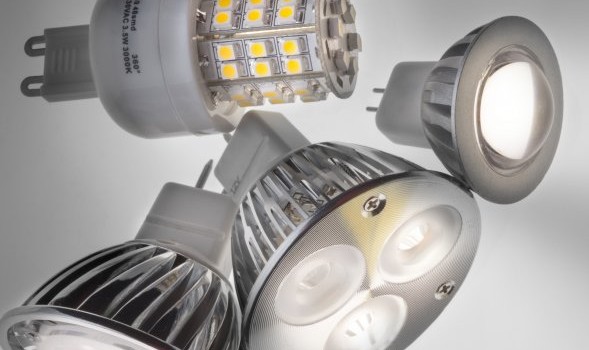
Introduction to low energy lighting
Traditional incandescent bulbs work by passing an electric current through an extremely thin filament which becomes very hot, thereby emitting light. Of all the electricity that goes through the filament, only a small proportion is given off as light; the remainder is wasted as heat (approximately 90%), so these are grossly inefficient, and waste electricity.
Energy saving light bulbs convert a far higher proportion of the electricity supplied to them into light (rather than heat) and therefore require less electricity to operate, saving the consumer money on their electricity bill. Until recently, there were two options when it came to energy saving lighting: LEDs (Light emitting diodes) and the older CFLs (compact fluorescent lighting). However, CFLs are no longer commonly sold, as they are inefficient when compared to LEDs.
Many people have already made the switch to LED light bulbs, but they are set to become the norm in households. Under the Energy Efficiency Directive (which encourages the use of energy efficient appliances), traditional halogen bulbs have been being phased out in the UK since September 2016. Once stocks run out, shops will no longer be allowed to sell incandescent bulbs. This is good news for homeowners, because more efficient lighting can help them cut their bills, but it will also help the UK reach carbon reduction targets, by reducing energy demand.
What types of low energy lighting are available?
LED light bulbs
LED bulbs are comprised of numerous light emitting diodes that together produce light when a current is passed through them. The electrical current excites the electrons inside the diode which produce photons (light) as a result. LEDs are often referred to as solid-state lighting. This simply means that the light is emitted from a solid object (a block of semiconductor), rather than as a current passing through a filament, causing it to glow.
This is the reason LEDs are so much more energy efficient; instead of needing to get incredibly hot to emit light (as is the case with halogen or incandescent bulbs), for an LED to emit light a small current passing through it will suffice. This means that LEDs are far more durable than incandescent bulbs and have an estimated life of 40,000 hours, compared to an incandescent bulb’s estimated 1000 hours.
So apart from lasting 40 times longer, why else swap to LEDs? Well, because an incandescent bulb needs to get hot to produce light, it converts about 90% of the electricity directly into heat. The LED, however, doesn’t need to get hot to produce the light, so uses just 10% of the energy compared with an incandescent it can produce the same level of light – and that is why they are the future.
LED bulbs require just 10% of the electricity used by an incandescent bulb, but produce the same amount of light.
This means truly significant energy savings in the home. Replacing just one 50Watt halogen spotlight in your kitchen with a 5Watt LED equivalent could save you over £15 a year (just one bulb!) but produces the same amount of light.
It is important to note that not all LED bulbs are made equal, so please refer to our comprehensive buyers’ guide to make sure you know what to look for when you are looking to get them for your home.
CFL light bulbs
Older energy saving lightbulbs – CFL bulbs – contain an inert gas and the glass is coated on the inside with a layer of phosphor. When electricity is passed through the gas, it emits ultraviolet rays which cause the phosphor coating to glow, thereby providing light. Compared to incandescent bulbs, CFL bulbs use 20% of the electrical power to produce the same level of lighting, and can last about 10000 hours. But there are downsides: firstly they take time to warm up when you switch them on, so they take a minute or two to start producing the required levels of light. Secondly, they contain a trace amount of mercury. This means they need to be disposed off in the correct way or they can have a detrimental impact on the environment.
Essentially, they were the energy saving lightbulb placeholder before LEDs became affordable for consumers. The fact LEDs are now affordable means they should be consigned to the scrapheap.
Why use LED energy saving bulbs?
On average, lighting accounts for 8% of a household’s energy bill in the UK and therefore cutting this is one of the easiest ways to save energy and money in your home. If you look at our 5 Watt LED versus 50 Watt halogen comparison you will be able to see the kind of savings you will be able to make. In addition, LED bulbs last about 20 times longer, so gone will be the days of having to get the ladder out to replace a kitchen bulb every other week!
Energy saving light bulbs in the home
It doesn’t matter if you own or rent your property, or if you live in a house, flat or bungalow, you can save money today by changing the way you use your lights and by fitting new energy-saving lights. Many homes today use a mixture of standard light fittings and halogen down lighters or spotlights (mainly in kitchens and bathrooms). All of these light bulbs can be replaced by either the LEDs – so do it now!
90% energy savings really do add up and they will quickly cover the additional capital cost of the LED bulbs in the first place and as we describe in this blog – don’t wait until your existing bulbs blow before you change them!
You can buy low energy light fittings, which will only take low energy light bulbs, however since many of the new energy saving lights fit in existing fittings there seems little point in doing this unless you are having major renovations in the home. These low energy fittings use a ballast or transformer fitted into the base of the light fitting. It controls the supply of electricity to the bulb, allowing for a small surge of power for a millisecond to light the bulb and then reducing the electricity flow to a very low level. These low energy fittings require a pin based energy saving bulb. This is a different fitting to a conventional bulb but will ensure that the bulbs you buy in future will always save energy, money and the environment.
How do you install LED light bulbs?
Just like normal bulbs! They are available with screw or bayonet fixings.
Do LEDs come in different shapes and sizes?
Yes. The range is more or less the same as halogen bulbs, from standard bulbs to spotlights and floodlight bulbs.
Are LED light bulbs bad for your health?
Some people are worried about the rumoured health effects of LED light bulbs. Some LEDs give off a colder light than yellow-toned incandescent bulbs, and people have claimed that this ‘blue’ light damages eye health. This link has not been proven by scientists – and, as technology develops, there are more and more warm-toned LEDs on the market.
Another worry for some people is that LEDs may interrupt sleep patterns, because white light can suppress the natural production of melatonin. The idea that bright artificial lighting at night time affects our body clock is nothing new though; if you’re worried, dim your lights close to bedtime!
Are LEDs more expensive?
LED bulbs are slightly more expensive to buy: most cost £5-10. They are, however, far cheaper to run, because they use 90% less energy than halogen bulbs. They also last much longer, as they are don’t have filaments, which is what eventually breaks and stops traditional bulbs working. LEDs can last as long as 25-30 years, as opposed to the normal 1 or 2.
For these reasons, spending a little more in the first place will more than pay back in the long run. Plus, as LED bulbs become the norm in UK homes, prices are expected to fall.
Cut your bills further – use your lights less
As discussed earlier, energy saving lightbulbs will save you money within your house as they use less electricity to produce the same amount of light. An obvious – but often overlooked – way to save on your electricity bill is to use your lights more cleverly…
Here are a few tips that will help you achieve this:
- If you are leaving a room, turn off the lights – even if only for a few minutes you will save energy.
- Have a range of different lights within your rooms with different switches, this will allow you to achieve the lighting you need.
- If you have external lights, use a movement sensor that will activate the lights when people approach. This means that they will not be on all the time, and save you power.
- Try and arrange the switches so it’s easy to turn them off, for example have a switch at the bottom and top of a flight of stairs, enabling you to turn them on and off easier.
- Install skylights or solar tunnels to minimise lighting needed during daylight hours.
Benefits
- An LED bulb has the potential to last between 25 and 40 years, and will use about 90% less energy compared to a similar incandescent counterparts. They also ‘warm-up’ instantaneously unlike the CFL bulbs.
- Energy saving lightbulbs are more durable than traditional incandescent bulbs as they have no filament so will potentially survive jarring where traditional bulbs would get broken.
Limitations
- CFL lightbulbs can take a small amount of time to ’warm up’ until which point they will not be emitting their maximum light.
- Both types of Energy saving lightbulbs cost more than the traditional type – however these costs will be paid back many times over in energy savings.
- Not all CFLs can be used with dimmer switches – some can, but it is important to check on the packet to make sure.
- CFLs contain small amounts of mercury which is a toxic metal, so they need to be disposed of correctly.
Cost
- A recommended energy saving light bulb will cost you £3-£4 compared to about 50p for a normal bulb, while an LED bulb may cost £10 or more.
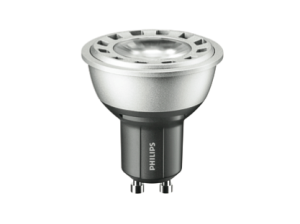
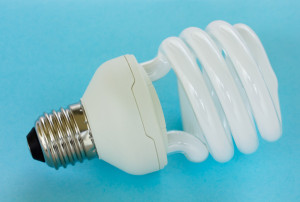
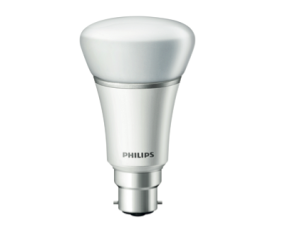




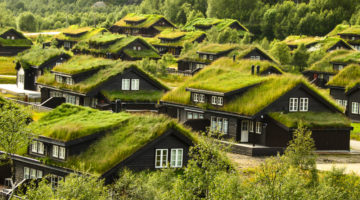







Light is proven to be one of the main energy consumption factors at home. LED bulbs are more friendly not only in terms of ecological and financial coincidence of high electricity consumption, but also thanks to their durability they actually save materials in terms of production and maintenance materials that thrown out in nature. The fact that they also almost don’t emit any heat will also become a decisive factor once most companies and households implement this technology.
Commendable post. It is true that LED lights are highly energy efficient and have huge lifespan With an average light generation of 50% and lifespan of 50,000 burning hours, LED lights are an immense improvement over incandescent and halogen lights. Interestingly, LED companies are further developing advanced LED solutions related to healthy lighting. I have been using circadian light bulbs especially designed for balancing circadian rhythm.
As an electrical engineer i am at a loss why all lighting is not LED it saves so much energy even compared to florescent lighting. Any other lighting is wasting money.